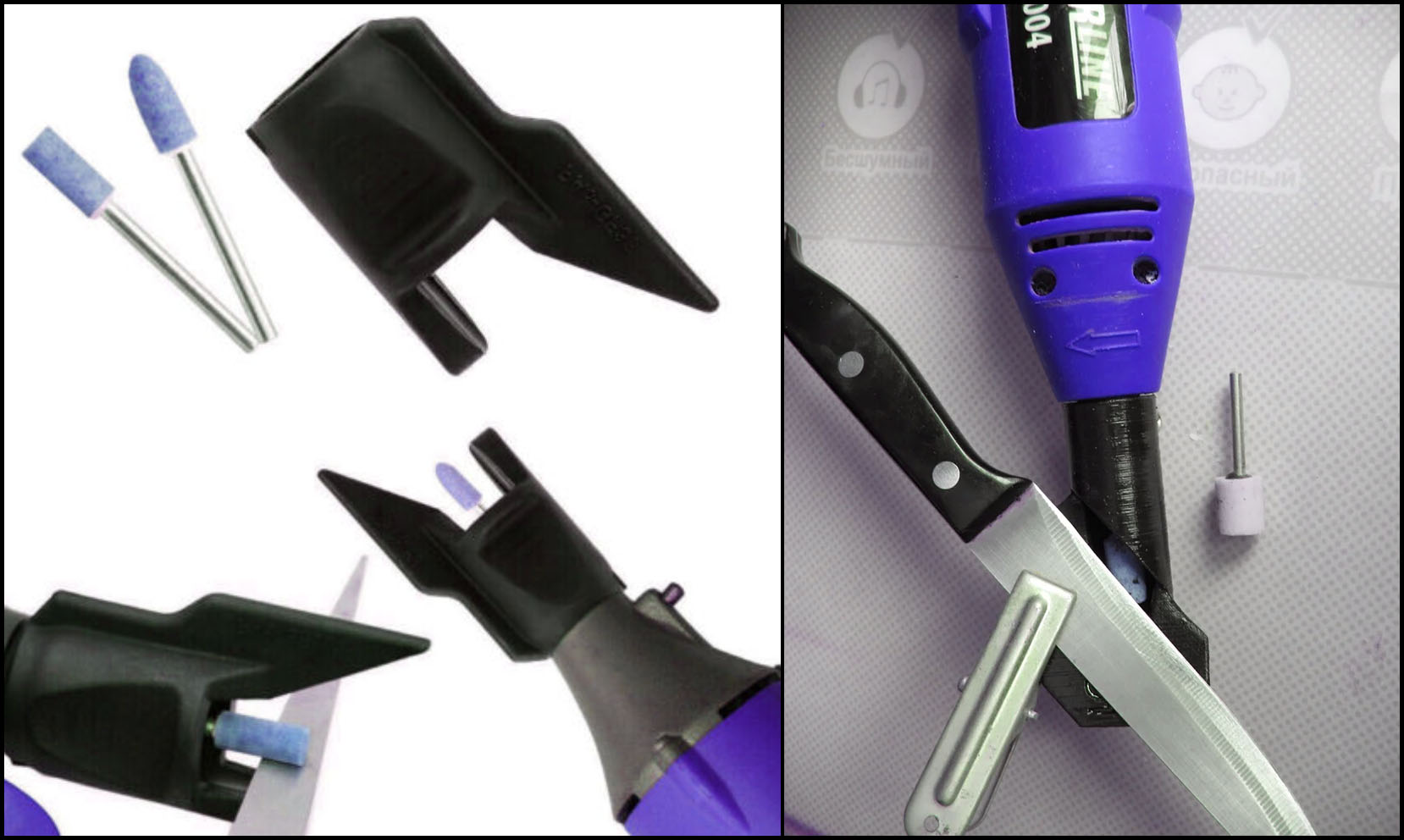How to Sharpen a Knife with a Dremel
When you read this title some of you may automatically think, “What! Don’t do that!” but you can use a Dremel to sharpen a knife if you use a jig or stand that holds the Dremel in place.
If you were to hold the Dremel and try to sharpen the knife by hand you will end up with a mess. It is pretty much impossible to get a nice symmetrical even edge if you try to move a Dremel over a knife blade. I don’t care if you boast that you have the steadiest of hands and a keen eye, one little slip with the Dremel tool and you put a large gash into the blade and destroy the edge.

But, there is a way to sharpen a knife with a Dremel. You have to use a ‘jig’ or ‘stand’ that holds the Dremel in place.
With the Dremel securely in place, you can turn on the Dremel and proceed to move the blade over the Dremel. Some people use a desktop vise but a special jig or stand would work the best because even with a steady hand and a tabletop vice you can slip and destroy your knife. Some jigs out there even have a platform that you can rest your knife blade on as you move it along the Dremel that can be set to any angle that you want.
Here are the recommended angles according to Redi-Edge.
- 30° angle for sharpening filet and boning knives
- 40° angle for sharpening most knives
- 60° angle for sharpening tactical knives
Wait a minute. I thought that most of the articles here say sharpen it at a 20-degree angle? Why is that?
The Redi-Edge sharpeners come with angles of 30°, 40° or 60°. The 30° inclusive angle maintains a consistent 15° double edge on your knives. The 40° inclusive angle maintains a consistent 20° double edge on your knives. The 60° inclusive angle maintains a consistent 30° double edge on your knives.
That way sharpening one side at a time is 20 degrees but using the Redi-Edge sharpener you sharpen both sides at once using the 40-degree angle but it will be 20 degrees on each side.
The process of sharpening a knife with a Dremel is pretty much the same as sharpening a knife in the other articles. With the jig firmly in place so that it won’t move or slip on the workbench that you are working on you turn on the Dremel and carefully move the entire blade across the Dremel at a 20-degree angle for most knives. If you are sharpening a fillet knife or a boning knife then you would hold the knife at a 15-degree angle and if you have a tactical knife then you would hold it at about a 30-degree angle.
If your jig has an adjustable shelf where you can adjust the angle that works the best because you can be assured that you are keeping the blade at the exact angle that you need.
When you drag the blade across the Dremel be sure that you are moving in the same direction as the Dremel’s spin. For example, if the Dremel is spinning clockwise then you will want to make sure that your knife blade goes in the direction of the Dremel. If you go against it then it will make the blade jump and ruin the edge or worse yet it could kick back and do some damage to you as well.
Better yet, just purchase one of our Redi-Edge sharpeners. They are the best on the market and make sharpening a knife much easier.
Type of Knives we have for sale below:
Hunting Knives | Fillet Knives | Bowie Knives | Camping Knives | Drop Point Knives | Fixed Blades | Skinner Knives | Fin and Feather
Pocket Knives
Pocket Knives | Boy Scout Knives | Folding Knives | Yooper Knives
Custom Knives
Custom Knives | Damascus Knives | Engraved Knives
Kitchen Knives
Kitchen Cutlery | Knife Sets
Axes
Mini Axes | Redi-Axes | Other Axes
Sharpeners
Redi-Edge Sharpeners
Our Gift Shop
Hats | Clothing | Jewelry | Artwork | Drinking Items | Flashlights | Miscellaneous